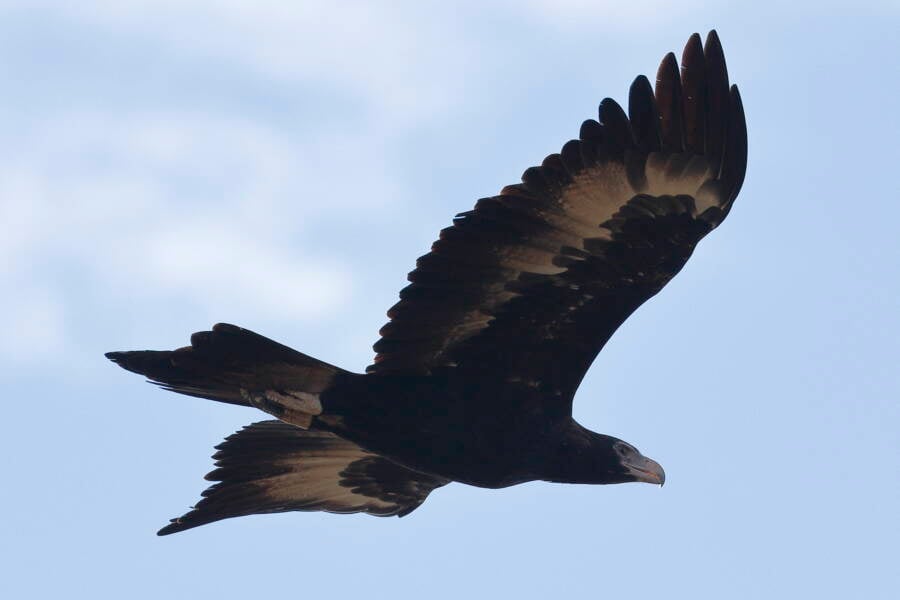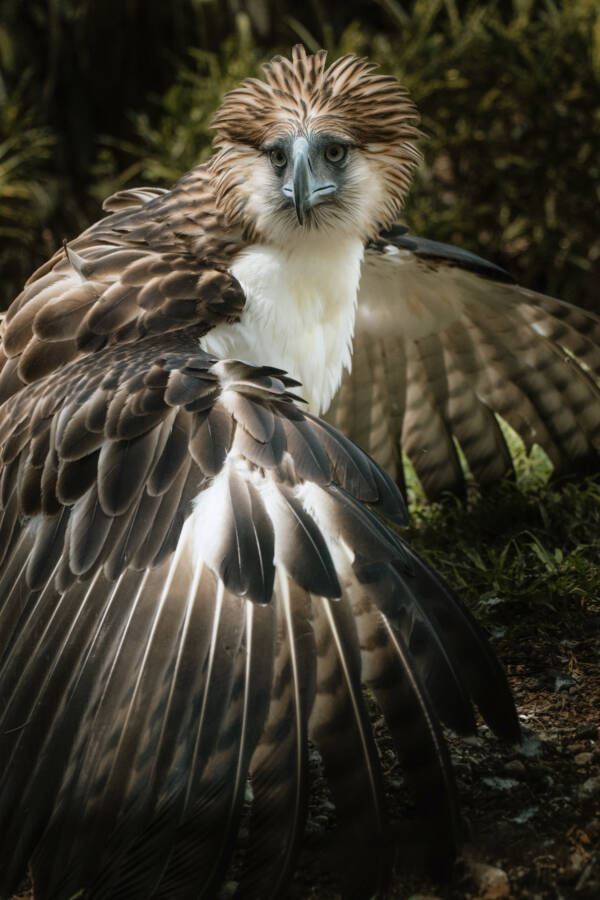Fossils uncovered in Australia paint a picture of the continent's largest known bird of prey, the Gaff's powerful eagle.

Wikimedia CommonsThe newly discovered eagle species was nearly double the size of the wedge-tailed eagle pictured here.
Over 60,000 years ago, Australia was home to a massive eagle relative with a 10-foot wingspan, a new study confirmed. Known as Gaff’s powerful eagle (Dynatoaetus gaffae), the ancient raptor species was described from a fossil collection gathered between 1956 and 2021.
According to a report from the Australian Broadcasting Corporation (ABC), the fossils were first unearthed in southern Australia’s Mairs Cave and the Naracoorte Caves in 1956 and 1969.
Researchers, however, did not have enough to fully reconstruct a skeleton, and for years were unable to identify the eagle. But in 2021, Flinders University paleontologist Ellen Mather and her team returned to the caves intending to complete the puzzle.
“After half a century, and several delays caused by the pandemic, the expedition with volunteers from the University’s Speleological Society found a further 28 bones scattered about deep among the boulders at the site indicated by one of these museum relics,” Mather said in a statement.
“We were very excited to find many more bones from much of the skeleton to create a better picture and description of these magnificent long-lost giant extinct birds,” she added.
Mather described the Dynatoaetus as being similar to the giant Philippine eagle and the Harpy eagle native to South America, and said it shared traits with Old World vultures.
It would have also once shared the skies with the wedge-tailed eagle, though Dynatoaetus was nearly double its size, and would have likely been a highly effective predator — especially when hunting larger prey.
“We were able to see how it had quite large and robust leg bones, which indicate that it was a predator specialising in larger prey,” Mather said. “It could definitely grab onto a kangaroo and sink its claws in until it stopped struggling.”

Wikimedia CommonsA giant Philippine eagle, with traits similar to those of the extinct Gaff’s powerful eagle.
“It was humongous,” said study co-author Trevor Worthy, a vertebrate paleontologist at Flinders University. At the time, roughly 50,000 to 7000,000 years ago, Worthy believes Dynatoaetus was likely the largest eagle on the planet.
Only two known larger ancient eagle species have been discovered — on the islands of New Zealand and Cuba — both of which had a similar wingspan, but were likely heavier.
Australia was once home to a litany of giant creatures including massive flightless birds, giant kangaroos, hulking monitor lizards, and other marsupials resembling modern bears. Dynatoaetus would have easily been able to feed on the juveniles of these gigantic creatures, around the size of modern kangaroos.
“It had giant talons, spreading up to 30 centimeters (just under 12 inches), which easily would have been able to dispatch a juvenile giant kangaroo, large flightless bird or other species of lost megafauna from that era,” Worthy said.

Flinders UniversityAn illustration of the skeletal model of Dynatoaetus gaffae.
It’s also notable, Worthy added, that researchers have often observed a lack of large land predators on the Australian continent in prehistoric times. In that sense, Dynatoaetus is both a rarity and a missing link in the food chain.
However, Dynatoaetus’ large size meant it had to hunt proportionally large prey, so it’s likely that it went extinct as a result of its large prey going extinct, Mather said.
“This discovery reveals that this incredible family of birds was once much more diverse in Australia, and that raptors were also impacted by the mass extinction that wiped out most of Australia’s megafauna,” Mather said.
The discovery of Gaff’s powerful eagle also offers some insight into the daily life of ancient wedge-tailed eagles.
“Given that the Australian birds of prey used to be more diverse, it could mean that the wedge-tailed eagle in the past was more limited in where it lived and what it ate,” Mather said. “Otherwise, it would have been directly competing against the giant Dynatoaetus for those resources.”
Mather, Worthy, and the team from Flinders University said they hope to discover more fossils and learn even more about this now-extinct predator.
“Then we can try and figure out it might have lived and how it interacted with its environment,” Mather said.
After learning about this ancient eagle, read about the ancient bird unearthed in China with striking similarities to a T. Rex. Or, see this collection of Earth’s most unbelievable prehistoric animals.





